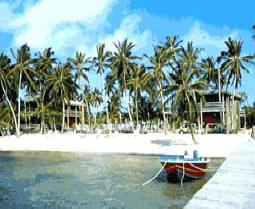| Culture
The Maya built breathtaking temple complexes aligned to the movement of
celestial bodies. Although they remained technically a Stone Age
culture, they also developed sophisticated mathematics, astronomy and
calendars. The Spanish constructed some plain stone churches, but the
modern architecture is predominantly British Caribbean in style.
Belize is officially English-speaking, but the creoles (the largest
ethnic group) speak their own colorful dialect as well as standard
English. Spanish is the main language in the north and some towns in the
west. You may also hear Mayan, Chinese, Mennonite German, Lebanese,
Arabic, Hindi and Garífuna (the language of the Garinagu people of Stann
Creek district) being spoken.
|
 |
|
The majority of Belize's
population are Roman Catholics, but British influence has created a
sizable and varied protestant congregation, including German Swiss
Mennonites. The Mayan practice of Catholicism is a fascinating fusion of
shamanist-animist and Christian ritual.
Belize has never really developed a national cuisine. Its cooking
borrows elements from the UK, the USA, Mexico and the Caribbean. The
traditional staples are rice and beans. These are often eaten with
chicken, pork, beef, fish or vegetables. Coconut milk and fried
plaintain add a tropical flavor. Exotic traditional foods include
armadillo, venison and fried paca, a controversial brow n-spotted rodent
(similar to a guinea pig) that conservationist-gourmets won't touch with
a ten foot cassava.
|

